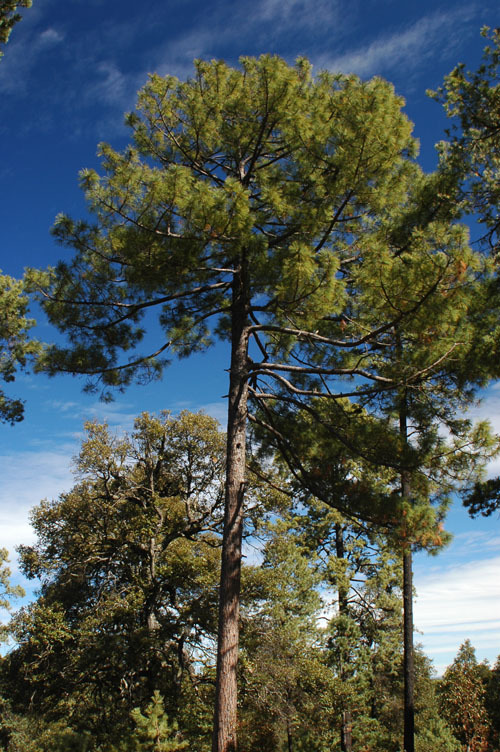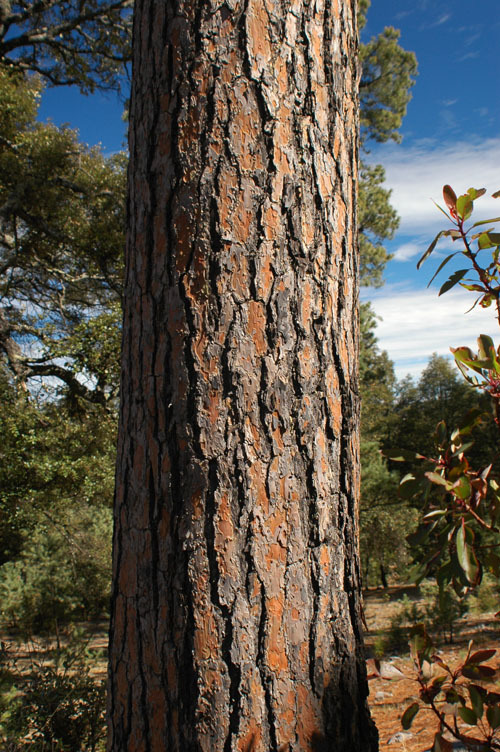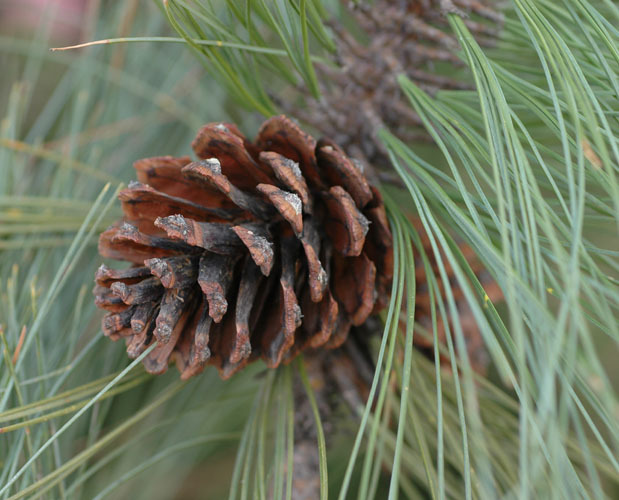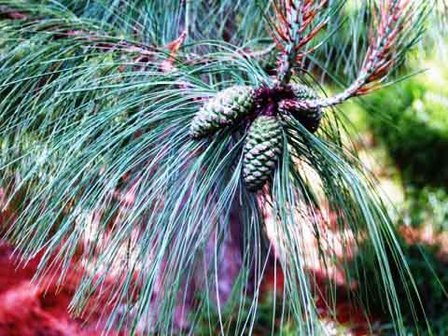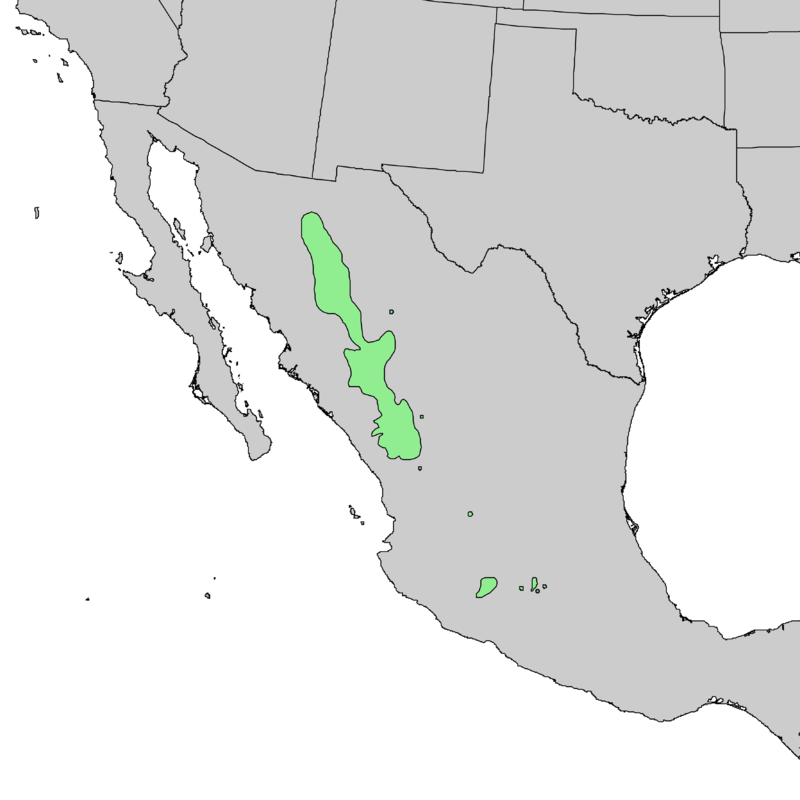subgenus Pinus, section Trifoliae (Duhamel), subsection Ponderosae (Louden).
Pinus durangensis, first described in 1942 by Maximino MartÃnez (1888-1964), is commonly known as Durango pine, as well is pino blanco or pino real in the Spanish language. It's populations are mostly abundant in the Mexican state of Durango, hence the species name.
Ethnobotany. This is one of Mexico's more important timber trees, and logging is a widespread and commercially important activity in its range. Jessy Perry reports that logging has greatly reduced its range. It is also locally used for firewood and carpentry.
Description. Durango pine is an evergreen coniferous species of tree that grows to mature heights of 100 to 125 feet (30 - 40 m) tall with a trunk up to 20 to 32 inches (50 - 80 cm) in diameter, measured at breast height. The tree's crown is dense and pyramidal when young, becoming more rounded and shallow with age. Wood is light, soft, yellowish in color.
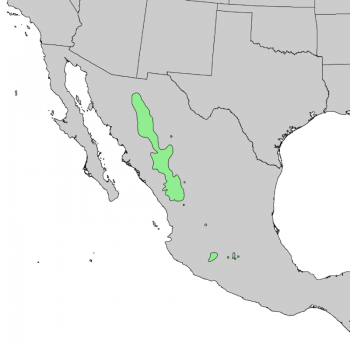
Distribution. This species is native to Mexico - eastern Sonora, Chihuahua, Durango, Zacatecas, northern Jalisco (where it is common), and scattered south through Jalisco and Michoacán. Its distribution is mainly through the northern Sierra Madre Occidental, where it occurs at elevations of 5.200 to 9.200 feet (1,600 - 2,800 m) above sea level. Rainfall is about 24 inches (600 mm) per year in Durango; probably more like 40 inches (1,000 mm) per year at the elevation where the pines are most abundant, falling mostly as rain but sometimes as snow.
Hardy to USDA Zone 8 - cold hardiness limit between 10° and 20°F (-12.1° and -6.7°C).
